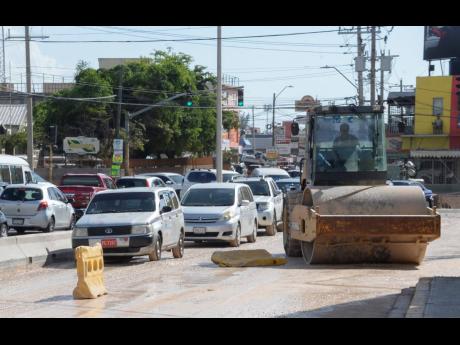Basic tips for driving in traffic
Driving in the city can be demanding, but it does not have to be that way. Sometimes we watch in amazement as the taxi slashes through the clogged street. Sometimes we are on the brakes, next on the throttle, and then horn blaring incessantly.
Motor vehicles come in from all sides. Pedestrians wander everywhere, and movement is interrupted by constant stops for lights, turning vehicles, and for traffic jams. Even driving as desperately as you can, cutting in and out of lanes, passing on the left, leaping away from stoplights, provides no guarantee that you will get where you are going any sooner.
“The first rule of traffic driving is to relax and take it easy” says Kanute Haire, director of road safety in the Ministry of Transport. “Reconcile yourself to doing that and allow enough time to reach your destination without speeding and overextending yourself and the motor vehicle.” Haire further said that if you find yourself short of time, the attempt to rush will immediately affect your composure.
“At all times, while on the roads, be full of courtesy and goodwill towards your fellow driver,” says Dr Valerie Freckleton, consultant psychologist. According to Freckleton, if a driver cannot develop courtesy even in the case of self-preservation, he does not belong behind the wheel of a vehicle. She maintains that it is essential in city traffic to keep track of what is going on not only in front, but in the back and on both sides.
Here are some pointers to practise:
1. Maintain the same general speed as most of the other motor vehicles. If you try to drive faster, you are being forced into a continuous passing situation, and with cars turning and lane-hopping in front of you, trouble is obvious.
2. Keep your eyes and head moving. Check the rear-view mirror every few moments and before every speed and directional change.
3. Try to keep a mental file of the location and movements of the vehicles behind.
4. Glance from side to side periodically to be sure no one is overtaking.
5. A rule of safe driving states that a one car-length interval should be kept between you and the vehicle ahead for every 10mph of speed. Some drivers may be tempted to squeeze into the space seemingly available. Defensive driving is not a competition where you lose points every time someone passes you.
6. Maintain steady speed at the safe and proper interval while treating other road users as colleagues or team members. They, too, are trying to complete their journey safely.
7. Due to the proximity of other motor cars, proper signals are crucial in city traffic. Hand signals should supplement the turn indicators where possible. This is especially vital when making right-hand turns, where danger exists from oncoming and overtaking traffic.
8. When making a turn on a slippery road, have both hands on the wheel.
9.If you are crossing an intersection and suddenly spot another vehicle rushing at you from either side, turn your wheels away from the direction in which it is approaching. This will cause the collision to be more of a glancing blow than a direct hit.
10. Too many drivers merely honk their horns as they approach a potentially dangerous situation without slowing or preparing themselves to take evasive measures. Use your horn as a supplement, not a substitute, for defensive driving.


